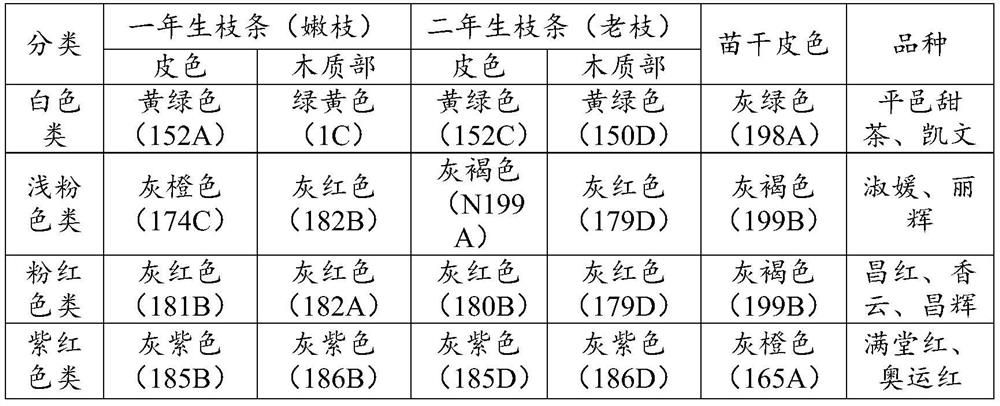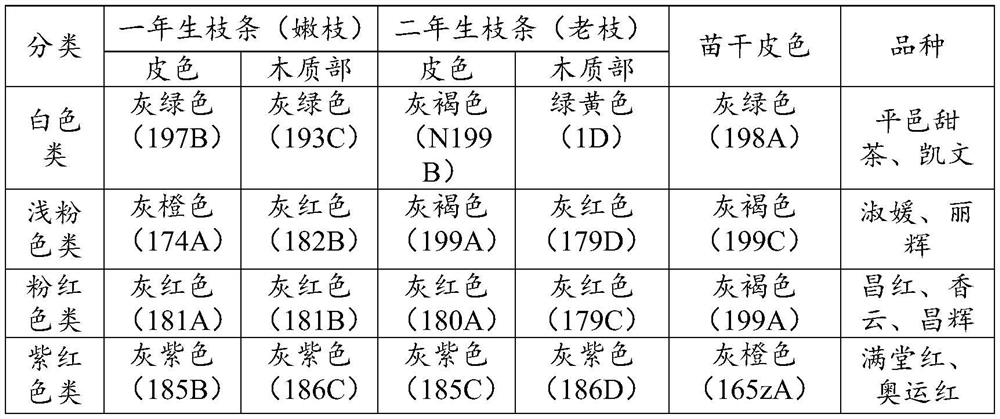Method for identifying flower colors of malus spectabilis nursery stocks in autumn and winter and application
A begonia and flower color technology, applied in the field of plant identification, can solve the problems of complicated operation, long identification time and high cost, and achieve the effects of simple identification method, convenient purchase and accurate identification results.
- Summary
- Abstract
- Description
- Claims
- Application Information
AI Technical Summary
Problems solved by technology
Method used
Image
Examples
Embodiment 1
[0109] 1. Test materials and methods
[0110] 1. Test materials
[0111] The test materials are 3-5 year old North American crabapple seedlings from the Begonia seedling cooperative in Changyi City, Shandong Province. According to the color of the petals, the 9 varieties of crabapple are divided into 4 types of color systems, namely white (Pingyi Tiancha, Kaiwen), light pink (Shuyuan, Lihui), pink (Changhong, Xiangyun, Chang Hui) and fuchsia (full house, Olympic red). Choose healthy seedlings over 3 years old for investigation and observation.
[0112] 2. Observation method
[0113] From 2018 to 2020, for 3 consecutive years, two samples were taken in late November (autumn) and mid-February (winter) each year. When taking branch sampling, select annual (twigs) and biennial (old branches) branches with seedling plants located in the upper middle and free from diseases and insect pests. There were 10 branches of each variety, and a total of 180 branches were collected twice...
PUM
 Login to View More
Login to View More Abstract
Description
Claims
Application Information
 Login to View More
Login to View More - Generate Ideas
- Intellectual Property
- Life Sciences
- Materials
- Tech Scout
- Unparalleled Data Quality
- Higher Quality Content
- 60% Fewer Hallucinations
Browse by: Latest US Patents, China's latest patents, Technical Efficacy Thesaurus, Application Domain, Technology Topic, Popular Technical Reports.
© 2025 PatSnap. All rights reserved.Legal|Privacy policy|Modern Slavery Act Transparency Statement|Sitemap|About US| Contact US: help@patsnap.com


